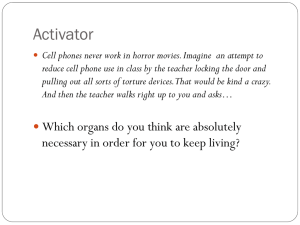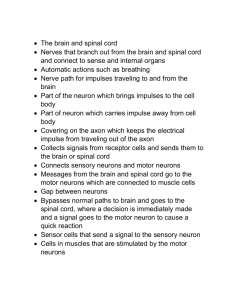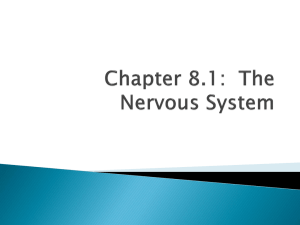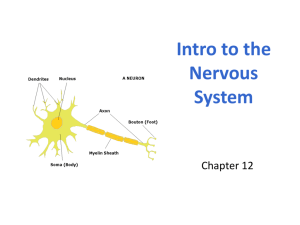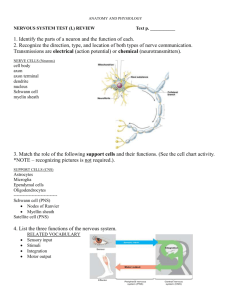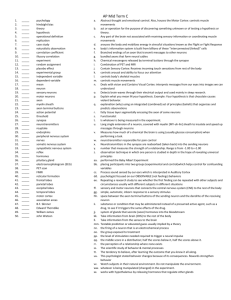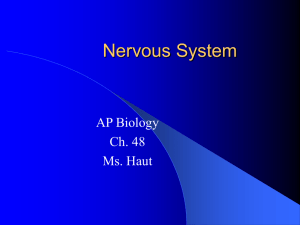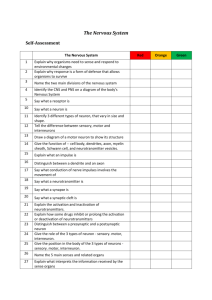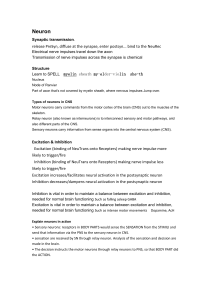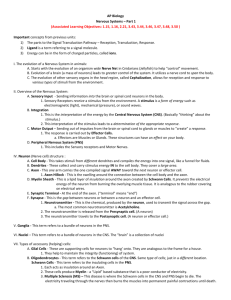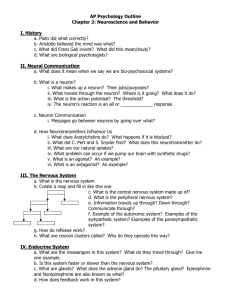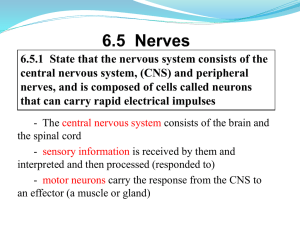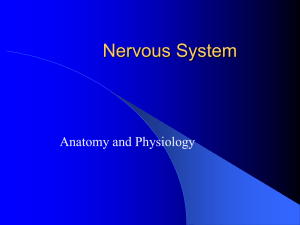Nervous System Vocabulary
advertisement
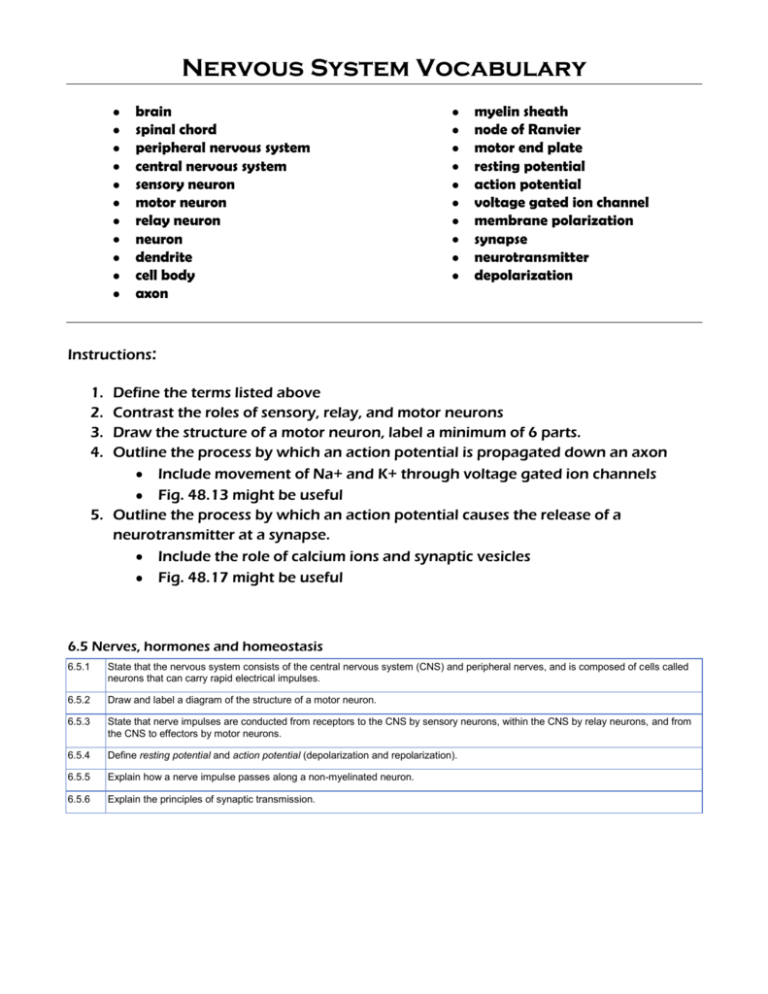
Nervous System Vocabulary brain spinal chord peripheral nervous system central nervous system sensory neuron motor neuron relay neuron neuron dendrite cell body axon myelin sheath node of Ranvier motor end plate resting potential action potential voltage gated ion channel membrane polarization synapse neurotransmitter depolarization Instructions: 1. 2. 3. 4. Define the terms listed above Contrast the roles of sensory, relay, and motor neurons Draw the structure of a motor neuron, label a minimum of 6 parts. Outline the process by which an action potential is propagated down an axon Include movement of Na+ and K+ through voltage gated ion channels Fig. 48.13 might be useful 5. Outline the process by which an action potential causes the release of a neurotransmitter at a synapse. Include the role of calcium ions and synaptic vesicles Fig. 48.17 might be useful 6.5 Nerves, hormones and homeostasis 6.5.1 State that the nervous system consists of the central nervous system (CNS) and peripheral nerves, and is composed of cells called neurons that can carry rapid electrical impulses. 6.5.2 Draw and label a diagram of the structure of a motor neuron. 6.5.3 State that nerve impulses are conducted from receptors to the CNS by sensory neurons, within the CNS by relay neurons, and from the CNS to effectors by motor neurons. 6.5.4 Define resting potential and action potential (depolarization and repolarization). 6.5.5 Explain how a nerve impulse passes along a non-myelinated neuron. 6.5.6 Explain the principles of synaptic transmission.
